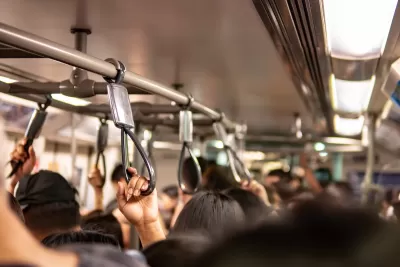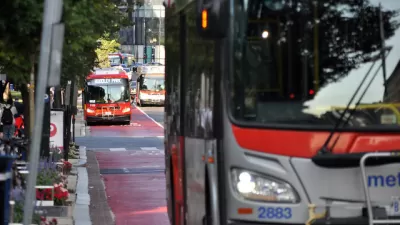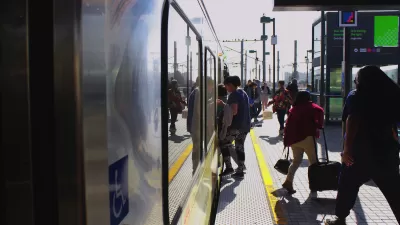Transit agencies around the country are boosting their efforts to serve historically marginalized communities and make transit work better for the households that rely on it the most.

A new report from the American Public Transportation Association (APTA) highlights the efforts transit agencies around the country are making to increase equity and provide effective transit service to the low-income households that often depend on it the most.
According to an article by Dan Zukowski in Smart Cities Dive, “The report summarizes equity-related actions from 75 organizations and takes an in-depth look at efforts by 11 transit agencies.”
Some agencies, like the Chicago Transit Authority (CTA) and the Central Puget Sound Regional Transit Authority, have created positions specifically dedicated to addressing equity. “The Massachusetts Bay Transit Authority requires an equity analysis for all proposed fare changes and major service changes,” while the Los Angeles County Metropolitan Transportation Authority (Metro) created an equity dashboard to increase transparency and appraise the public of its efforts.
In some cases, transit agencies are expanding their scope to support transit-oriented development with affordable housing and multimodal infrastructure near their stations. “Other agencies are getting directly involved with the communities they serve to address homelessness. The Metropolitan Atlanta Rapid Transit Authority is partnering with a homeless shelter to provide individual-level resources. The Lane Transit District in Eugene, Oregon, partnered with the city to find vacant land the transit agency owned that could be used as safe sleep areas for people experiencing homelessness,” Zukowski adds.
The APTA report offers three recommendations for transit agencies seeking to improve equity: develop an equity mission statement to guide goals and priorities; ensure the necessary internal resources to consider equity during all processes; and build community through initiatives that provide tangible benefits to the agency’s constituent communities.
FULL STORY: Transit agencies document equity efforts in APTA report

Study: Maui’s Plan to Convert Vacation Rentals to Long-Term Housing Could Cause Nearly $1 Billion Economic Loss
The plan would reduce visitor accommodation by 25,% resulting in 1,900 jobs lost.

North Texas Transit Leaders Tout Benefits of TOD for Growing Region
At a summit focused on transit-oriented development, policymakers discussed how North Texas’ expanded light rail system can serve as a tool for economic growth.

Why Should We Subsidize Public Transportation?
Many public transit agencies face financial stress due to rising costs, declining fare revenue, and declining subsidies. Transit advocates must provide a strong business case for increasing public transit funding.

How to Make US Trains Faster
Changes to boarding platforms and a switch to electric trains could improve U.S. passenger rail service without the added cost of high-speed rail.

Columbia’s Revitalized ‘Loop’ Is a Hub for Local Entrepreneurs
A focus on small businesses is helping a commercial corridor in Columbia, Missouri thrive.

Invasive Insect Threatens Minnesota’s Ash Forests
The Emerald Ash Borer is a rapidly spreading invasive pest threatening Minnesota’s ash trees, and homeowners are encouraged to plant diverse replacement species, avoid moving ash firewood, and monitor for signs of infestation.
Urban Design for Planners 1: Software Tools
This six-course series explores essential urban design concepts using open source software and equips planners with the tools they need to participate fully in the urban design process.
Planning for Universal Design
Learn the tools for implementing Universal Design in planning regulations.
City of Santa Clarita
Ascent Environmental
Institute for Housing and Urban Development Studies (IHS)
City of Grandview
Harvard GSD Executive Education
Toledo-Lucas County Plan Commissions
Salt Lake City
NYU Wagner Graduate School of Public Service





























